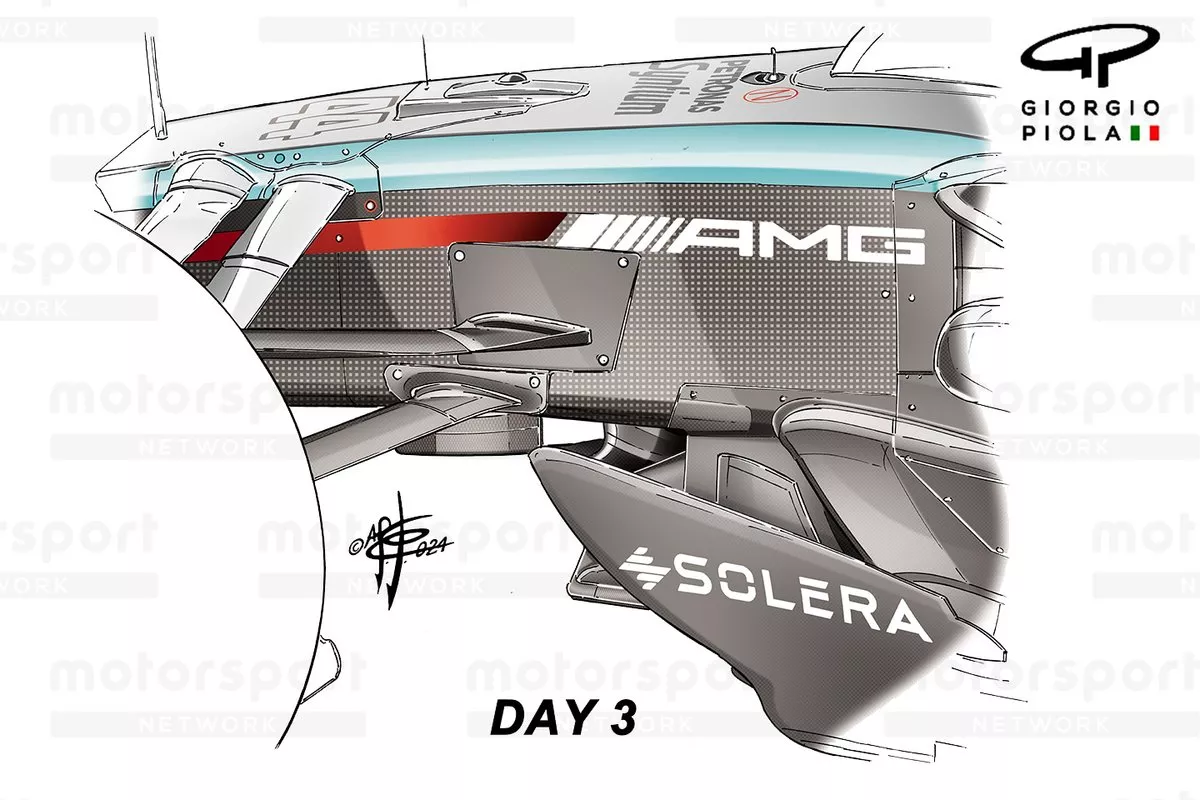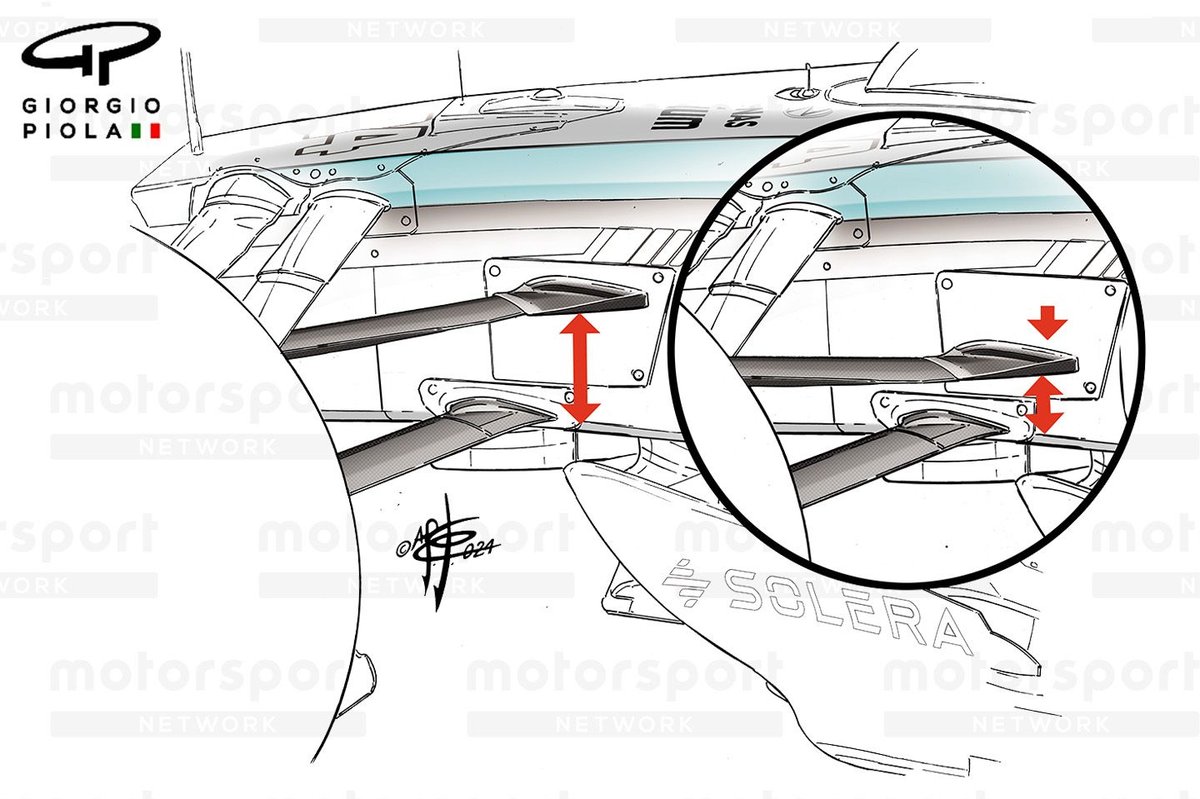Initially, it was speculated that the Brackley-based team’s actions were merely a smokescreen strategy to confound competitors during pre-season, as regulations prohibit teams from incorporating superfluous suspension components on their vehicles.
However, it has since been revealed that the image in question hinted at a novel adaptive feature integrated into the Mercedes chassis and front suspension for the current season.
This innovation enables the team to adjust the inboard end of the suspension leg to better suit the specific demands of each track’s optimal setup.
While most teams enjoy some degree of freedom in this area, the extent of adjustment on the W15 surpasses the usual millimeter-scale variations, offering Mercedes several centimeters of flexibility.
As illustrated, the larger hatch on the side of the W15’s chassis allows for various wishbone configurations, each yielding distinct kinematic and aerodynamic responses.
During pre-season testing, Mercedes experimented with different configurations, notably raising the rear leg of the upper wishbone for the initial two days before lowering it on the third day to assess its performance.

This adjustment alters the arm’s longitudinal position, potentially enhancing aerodynamic efficiency by bringing the upper and lower wishbone legs into closer proximity.
While this concept isn’t entirely unprecedented, with previous attempts by teams like McLaren’s MP4-31, Mercedes’ implementation boasts unprecedented adaptability, potentially granting them an advantage at diverse circuits.

Beyond aerodynamic gains, the multiple mounting-point arrangement also influences anti-dive characteristics, further enhancing the team’s competitive edge.
Though not the first time Mercedes has explored unconventional suspension layouts, with past examples including modifications to the W14, the W15 represents a significant leap in innovation.
Despite potential drawbacks such as added weight and structural complexity, Mercedes anticipates that the flexibility offered by this design will outweigh these concerns, widening the car’s setup options and facilitating adjustments tailored to each circuit’s unique demands.

